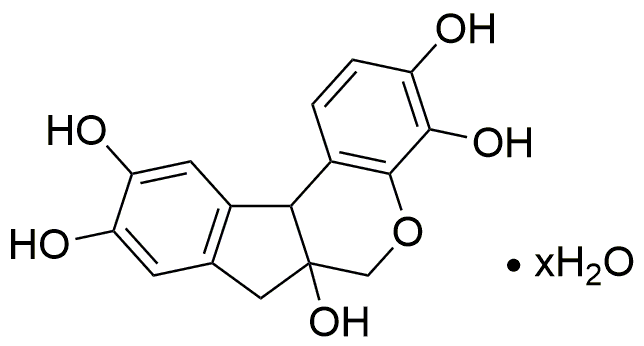Hematoxylin is widely utilized in research focused on:
- Histology and Pathology: Commonly used as a staining agent in tissue samples, hematoxylin helps visualize cellular structures under a microscope, making it essential for diagnosing diseases.
- Biological Research: In studies involving cell morphology, hematoxylin is used to stain nuclei, allowing researchers to analyze cell division and differentiation processes effectively.
- Pharmaceutical Development: This compound plays a role in the development of new drugs by aiding in the evaluation of tissue responses to various treatments, particularly in cancer research.
- Quality Control in Manufacturing: In industries such as cosmetics and food, hematoxylin is used to ensure product safety and quality by examining the histological effects of ingredients on tissues.
- Educational Purposes: Hematoxylin is a staple in educational laboratories, providing students with hands-on experience in microscopy and histological techniques, enhancing their learning in biological sciences.
General Information
Properties
Safety and Regulations
Applications
Hematoxylin is widely utilized in research focused on:
- Histology and Pathology: Commonly used as a staining agent in tissue samples, hematoxylin helps visualize cellular structures under a microscope, making it essential for diagnosing diseases.
- Biological Research: In studies involving cell morphology, hematoxylin is used to stain nuclei, allowing researchers to analyze cell division and differentiation processes effectively.
- Pharmaceutical Development: This compound plays a role in the development of new drugs by aiding in the evaluation of tissue responses to various treatments, particularly in cancer research.
- Quality Control in Manufacturing: In industries such as cosmetics and food, hematoxylin is used to ensure product safety and quality by examining the histological effects of ingredients on tissues.
- Educational Purposes: Hematoxylin is a staple in educational laboratories, providing students with hands-on experience in microscopy and histological techniques, enhancing their learning in biological sciences.
Documents
Safety Data Sheets (SDS)
The SDS provides comprehensive safety information on handling, storage, and disposal of the product.
Product Specification (PS)
The PS provides a comprehensive breakdown of the product’s properties, including chemical composition, physical state, purity, and storage requirements. It also details acceptable quality ranges and the product's intended applications.
Certificates of Analysis (COA)
Search for Certificates of Analysis (COA) by entering the products Lot Number. Lot and Batch Numbers can be found on a product’s label following the words ‘Lot’ or ‘Batch’.
*Catalog Number
*Lot Number
Certificates Of Origin (COO)
This COO confirms the country where the product was manufactured, and also details the materials and components used in it and whether it is derived from natural, synthetic, or other specific sources. This certificate may be required for customs, trade, and regulatory compliance.
*Catalog Number
*Lot Number
Safety Data Sheets (SDS)
The SDS provides comprehensive safety information on handling, storage, and disposal of the product.
DownloadProduct Specification (PS)
The PS provides a comprehensive breakdown of the product’s properties, including chemical composition, physical state, purity, and storage requirements. It also details acceptable quality ranges and the product's intended applications.
DownloadCertificates of Analysis (COA)
Search for Certificates of Analysis (COA) by entering the products Lot Number. Lot and Batch Numbers can be found on a product’s label following the words ‘Lot’ or ‘Batch’.
*Catalog Number
*Lot Number
Certificates Of Origin (COO)
This COO confirms the country where the product was manufactured, and also details the materials and components used in it and whether it is derived from natural, synthetic, or other specific sources. This certificate may be required for customs, trade, and regulatory compliance.


